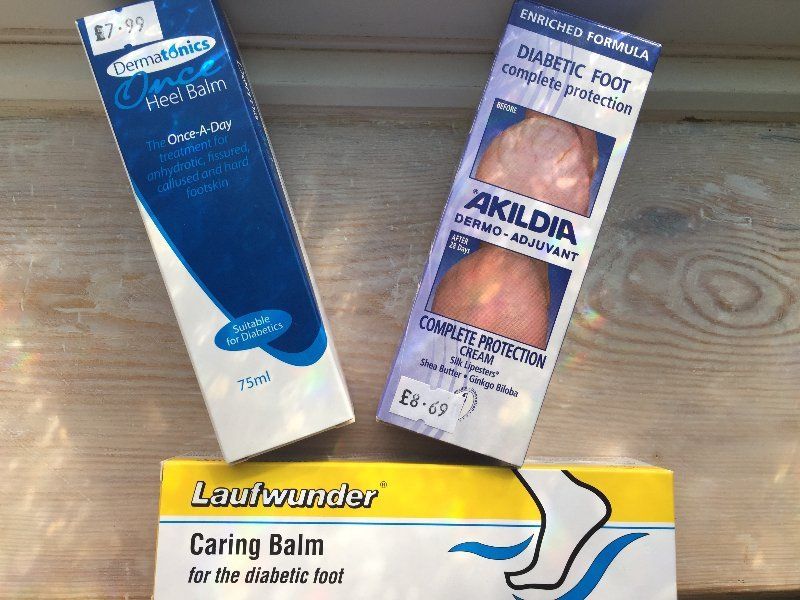Diabetes & Foot Health
- By Jane Lee
- •
- 07 Apr, 2017
- •
Notes from a well-heeled Podiatrist...

Over the years of training I undertook for my chiropody qualification, by far the most essential section of learning revolved around treating the feet of people with diabetes. Diabetes is currently at the forefront of the press for its proliferation in both the developing and developed world. It affects young and old, the otherwise fit and able and the more delicate and frail amongst us. In reality, it is highly likely you know or are related to someone who has either Type I or Type II diabetes mellitus.
All who know me will say I am extremely enthusiastic about the insights I gain into people's well being from looking at the feet. They describe our history, our emotional undercurrents, how our bodies are used and how we stand and move every day. Yet for diabetics, they also yield a lot of information about blood vessel and nerve damage in response to the disease. They may also display potentially life-threatening symptoms such as ulcerated tissue. Diabetic patients are informed of the risks of ulcers alongside peripheral neuropathy, infection and conditions such as gangrene and Charcot foot but, according to a 2014 surgery by Diabetes UK, 32% were not informed about how to look after their feet properly to avoid them developing! In 2015 an analysis of 414,784 Type I diabetic NHS patients confirmed that 27.7% didn't have an annual foot check. It is blindingly clear that access to, and understanding of, foot care for those with diabetes must improve.
Prevention wins over cure every time!
Every moment of each day, our bodies give us signals to help us recognise our physical and mental status quo much like a weather station measures each aspect of the local atmosphere. Sometimes we are brilliantly tuned in to the signals, such as when we are on holiday feeling the warm sand beneath our feet as our shoulders drop from being away from stress, or when we are in a period of ill health and are keen to recover. At other times (perhaps most of the time for the majority) we lose touch with the signals and daily tasks, responsibilities and demands drown them out.
Diabetics are skilled at reading the signs of blood sugar changes to prevent against an infamous 'hypo' (very low blood sugar) but when it comes to the part of the body we are all perhaps a little guilty of neglecting, the signs of the disease are less perceptible simply because it's not easy to see our feet! From what is visible to the client on the feet, it is important to understand what might indicate a change in the body.
Asking for help from a loved one or friend is one answer but you, and they, need to know what to look for:
Fabulous Foot Creams for Diabetics
Here at Walking on Air Well Being we stock a wide range of tried and tested foot creams and over the years I have compiled a short list of the most effective formulations for those with diabetes.
Our highly acclaimed creams include:
If you have any concerns regarding the condition of your feet please call to book a consultation with us, we would be delighted to help get you walking on air again! We can be reached on 01483 454 000.
Until next time,
Jane
All who know me will say I am extremely enthusiastic about the insights I gain into people's well being from looking at the feet. They describe our history, our emotional undercurrents, how our bodies are used and how we stand and move every day. Yet for diabetics, they also yield a lot of information about blood vessel and nerve damage in response to the disease. They may also display potentially life-threatening symptoms such as ulcerated tissue. Diabetic patients are informed of the risks of ulcers alongside peripheral neuropathy, infection and conditions such as gangrene and Charcot foot but, according to a 2014 surgery by Diabetes UK, 32% were not informed about how to look after their feet properly to avoid them developing! In 2015 an analysis of 414,784 Type I diabetic NHS patients confirmed that 27.7% didn't have an annual foot check. It is blindingly clear that access to, and understanding of, foot care for those with diabetes must improve.
Prevention wins over cure every time!
Every moment of each day, our bodies give us signals to help us recognise our physical and mental status quo much like a weather station measures each aspect of the local atmosphere. Sometimes we are brilliantly tuned in to the signals, such as when we are on holiday feeling the warm sand beneath our feet as our shoulders drop from being away from stress, or when we are in a period of ill health and are keen to recover. At other times (perhaps most of the time for the majority) we lose touch with the signals and daily tasks, responsibilities and demands drown them out.
Diabetics are skilled at reading the signs of blood sugar changes to prevent against an infamous 'hypo' (very low blood sugar) but when it comes to the part of the body we are all perhaps a little guilty of neglecting, the signs of the disease are less perceptible simply because it's not easy to see our feet! From what is visible to the client on the feet, it is important to understand what might indicate a change in the body.
Asking for help from a loved one or friend is one answer but you, and they, need to know what to look for:
- Swelling - are any parts of the foot swollen, red or hot?
- Wounds - are there any cuts, grazes or blistering? Is there any fluid from the wound?
- Pain - do any areas feel painful to touch?
- Bruising/discolouration - are the feet bruised/pale/red anywhere?
- Daily washing of the feet in warm (not hot - use your elbow to test if unsure) soapy water. Mild soaps are best - we have a wide range of chemical and irritant free cleansers in the clinic
- Avoiding long baths as this may leave the skin more susceptible to damage
- Drying the feet thoroughly but with a light touch - don't drag, rub or 'saw' the skin and take care to dab the area between the toes
- Using a foot cream specially designed for diabetics - see below - taking time to massage it into the skin thoroughly
- Avoiding talc, which can clog the pores and form shards when damp which may damage the delicate surface of the feet
- Wearing shoes that fit well - not too tight, worn or loose
- Keeping the feet warm and protected in the colder months with insulating socks and insoles, letting them breathe in the summer in light footwear
Fabulous Foot Creams for Diabetics
Here at Walking on Air Well Being we stock a wide range of tried and tested foot creams and over the years I have compiled a short list of the most effective formulations for those with diabetes.
Our highly acclaimed creams include:
- Akildia Diabetic Foot Complete Protection from Monaco (how glamorous!) which protects the feet from dehydration, callouses, roughness and keeps the skin supple (£8.69 for 75ml). Massage into the feet morning and evening.
- Laufwunder Caring Balm for the Diabetic Foot . Another firm favourite of mine this time from Germany, the caring balm is perfect for sensitive, dry skin. Its formulation prevents against further complications as it contains disinfecting ingredients, menthol (to refresh the skin and senses) and plant oils to nourish (£8 for 75ml). Massage into the feet morning and evening.
- Dermatonics Once Heal Balm is specially designed to encourage the healing of deeper cracks and fissures in the feet owing to its high content of urea (deeply moisturising ingredient). (£7.99 for 75ml) Use just once a day.
If you have any concerns regarding the condition of your feet please call to book a consultation with us, we would be delighted to help get you walking on air again! We can be reached on 01483 454 000.
Until next time,
Jane



